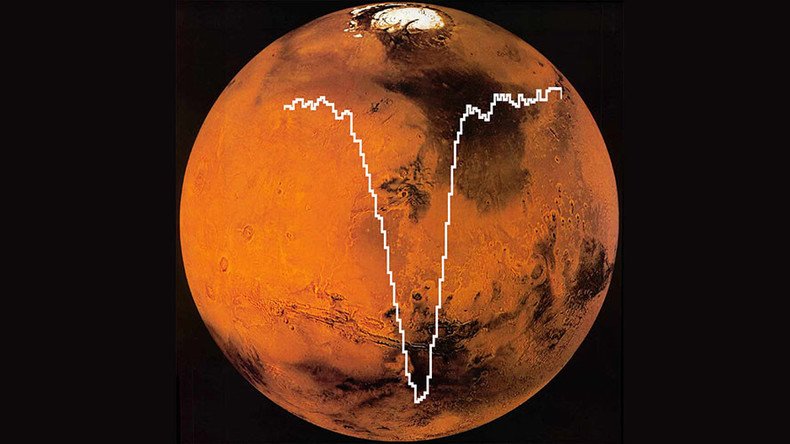NASA discovers atomic oxygen in Martian atmosphere for 1st time in 40yrs

NASA researchers have detected atomic oxygen in the Martian atmosphere for the first time in four decades. The discovery is extremely important for the space agency, which aims to send humans to the Red Planet in the 2030s.
The oxygen atoms were found in the upper atmosphere of Mars, known as the mesosphere. It marks the first time that oxygen has been observed in the Martian atmosphere since the Viking and Mariner missions of the 1970s.
"Atomic oxygen in the Martian atmosphere is notoriously difficult to measure," Stratospheric Observatory for Infrared Astronomy (SOFIA) project scientist Pamela Marcum said in a statement.
Red is not its only color: NASA captures Mars you’ve never imagined (PHOTOS) https://t.co/mb8PLbQifLpic.twitter.com/E01GGKMOOc
— RT (@RT_com) May 7, 2016
For decades, researchers have had difficulty accurately seeing the universe lying beyond Earth, due to the density and moisture of the skies.
To overcome that problem, NASA and the German Aerospace Center introduced SOFIA, a Boeing 747SP jetliner modified to carry a 100-inch diameter telescope while soaring 37,000-45,000ft above most of the infrared-blocking moisture in Earth’s atmosphere.
"To observe the far-infrared wavelengths needed to detect atomic oxygen, researchers must be above the majority of Earth’s atmosphere and use highly sensitive instruments, in this case a spectrometer. SOFIA provides both capabilities,” Marcum said.
'I don't hate Earth - but we are talking about Mars' - 'Mars One' candidate (EXCLUSIVE) https://t.co/bzEjfYmunEpic.twitter.com/K42edz4VfG
— RT (@RT_com) May 4, 2016
Atomic oxygen is believed to have a significant impact on the atmosphere of Mars, as it affects how other gases escape the planet.
Marcum and her colleagues have yet to give any exact figures on how much atomic oxygen is in the Martian mesosphere, but have said it was about half of the amount they expected. However, that amount could be the result of variations in the atmosphere. The team will continue to use SOFIA to gauge other areas of the planet to determine whether that was the case.
The finding could be a boost for NASA’s plans to send humans on a mission to Mars in the 2030s.












